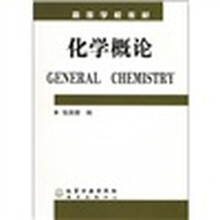Chapter1 Gases,GasPhaseEquilibria
1.1 ThePerfect-gasLaw
1.2 ThePartialPressuresofComponentsofaGasMixture
1.3 TheKineticMolecularTheoryofGases
1.4 DiffusionandEffusion
1.5 RealGases
1.6 TheScientificMethod
1.7 ChemicalEquilibriumingaseousstate
1.8 LeChtelier’sPrinciple
1.9 HeterogeneousEquilibria
Chapter2 ChemicalThermodynamics
2.1 FirstLawofThermodynamics
2.2 TheIsothermalExpansionofanIdealGas
2.3 EnthalpyandEnthalpyChange
2.4 SecondLawofThermodynamics
2.5 GibbsFreeEnergyandSpontaneity
2.6 InterpretationofFreeEnergy
Chapter3 ChemicalKinetics
3.1 ReactionRates3
3.2 RateLawsandReactionOrder
3.3 DeterminingtheRateLaw
3.4 TemperatureandRate:AModelforChemicalKinetic
3.5 ReactionMechanisms
3.6 Catalysis
Chapter4 AtomicStructureandthePeriodicTableoftheElements
4.1 Dalton’sAtomicTheory2
4.2 BasicCompositionsofAtoms
4.3 TheBirthoftheQuantumTheory
4.4 TheAtomicSpectrumofHydrogenandBohrTheor
4.5 TheQuantumMechanicalDescriptionofHydrogenAtom
4.6 PolyelectronicAtoms
4.7 ElectronConfigurationsofAtoms
4.8 ElectronDiagramsofAtoms
4.9 ThePeriodicTable
4.10 PeriodicTrendsinAtomicProperties
Chapter5 TheChemicalBond
5.1 TypesofChemicalBonds
5.2 IonicBond
5.3 CovalentBond
5.4 DescribingtheValenceElectronArrangement
5.5 PredictingtheMolecularStructure:TheVSEPRModel
5.6 ValenceBondTheory:HybridOrbitals
5.7 PolarcovalentBond
5.8 BondEnergy
5.9 MolecularOrbitalTheory
5.10 Orbitals:HumanInventions
Chapter6 LiquidandSolid
6.1 IntermolecularForces
6.2 ThePropertiesofLiquidState
6.3 Solidstate
6.4 Lattices
6.5 MetallicCrystals
6.6 IonicCrystals
6.7 CovalentNetworkSolids:CarbonandSilicon
6.8 PhaseTransitions
Chapter7 Acid-BaseEquilibria
7.1 Acid-Baseconcept
7.2 WaterasanAcidandaBase
7.3 RelativeStrengthsofAcidsandBases
7.4 ThepHScale
7.5 CalculatingthepHofWeakAcidSolutions
7.6 Acid-BasePropertiesofSalts
7.7 AcidSolutionsinWhichWaterContributestotheH
+Concentration
7.8 CommonIonEffect
7.9 BufferedSolutions
7.10 Acid-BaseTitration
Chapter8 Solutions
8.1 Solubility
8.2 SolubilityEquilibria
8.3 ComplicationsInherentinSolubilityCalculations
8.4 ComplexIonEquilibria
8.5 ColligativeProperties
8.6 ColloidalSolution
Chapter9 Electrochemistry
9.1 ElectrochemicalCells
9.2 StandardReductionPotentials
9.3 ElectrochemistryandThermodynamics
9.4 DependenceoftheCellPotentialonConcentration
9.5 Batteries
9.6 Corrosion
9.7 Electrolysis
9.8 CommercialElectrolyticProcesses
Chapter10 TheMain-GroupElements
Chapter11 TransitionMetalsandCoordinationChemistry
AppendixA MathematicalProcedures
AppendixB SpectralAnalysis
AppendixC NamingSimpleCompounds
AppendixD SelectedThermodynamicData
AppendixE
EquilibriumConstantsandStandardReductionPotentials
AppendixF
GLOSSARY
ReferenceMaterials

 缺书网
缺书网 扫码进群
扫码进群




